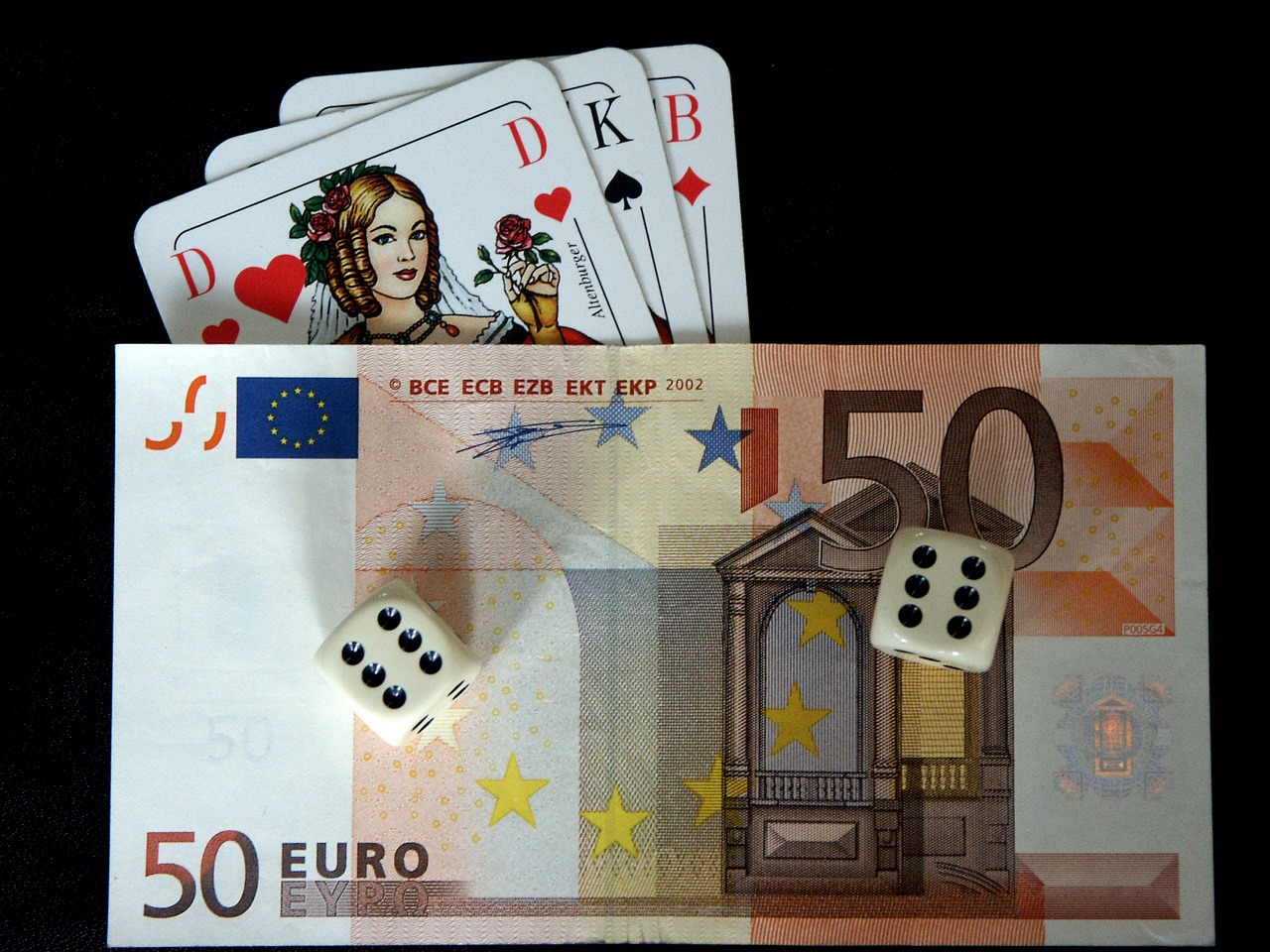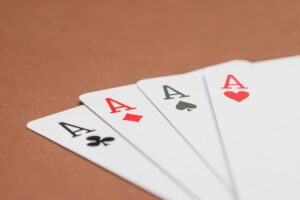Poker psychology is the study of human behavior and decision-making in the game of poker. It involves understanding your opponents’ thought processes, emotions, and tendencies in order to gain an advantage at the table. By reading your opponents’ minds, you can anticipate their moves, make better decisions, and ultimately increase your chances of winning. In this article, we will explore some of the key principles of poker psychology and how you can use them to your advantage.
The Importance of Body Language in Reading Your Opponents’ Minds in Poker Psychology
Body language is a nonverbal form of communication that can reveal a lot about a person’s thoughts and emotions. In poker, players often use body language to bluff or deceive their opponents. However, if you know how to read their body language, you can gain valuable insights into their hand strength and intentions.
One of the most common body language cues in poker is the way a player holds their chips. If a player is holding their chips tightly, it could indicate that they have a strong hand and are confident in their position. On the other hand, if a player is fidgeting with their chips or stacking them in a disorganized manner, it could suggest that they are nervous or unsure of their hand.
Another important body language cue to look out for is eye contact. If a player avoids eye contact, it could indicate that they are trying to hide something or are not confident in their hand. Conversely, if a player maintains eye contact, it could suggest that they are trying to intimidate their opponents or are confident in their position.
Facial expressions are also a crucial aspect of body language in poker. A player’s facial expressions can reveal a lot about their emotions and intentions. For example, if a player is smiling or laughing, it could suggest that they are relaxed and confident in their hand. On the other hand, if a player is frowning or appears tense, it could indicate that they are nervous or unsure of their position.
Posture is another important aspect of body language in poker. If a player is sitting up straight and appears alert, it could suggest that they are focused and confident in their position. Conversely, if a player is slouching or appears disinterested, it could indicate that they are not fully engaged in the game or are unsure of their hand.
In addition to these specific body language cues, it is also important to observe your opponents’ overall demeanor and behavior. For example, if a player is talking excessively or seems overly friendly, it could suggest that they are trying to distract their opponents or hide their true intentions. Conversely, if a player is quiet and reserved, it could indicate that they are focused and serious about the game.
While observing your opponents’ body language can provide valuable insights into their thoughts and emotions, it is important to remember that body language is not always a reliable indicator of a player’s hand strength or intentions. Some players may intentionally use body language to deceive their opponents, while others may simply have nervous habits or tics that are unrelated to their hand.
Therefore, it is important to use body language cues in conjunction with other information, such as the player’s betting patterns and the cards on the table, to make informed decisions in the game. By mastering the art of reading your opponents’ body language, you can gain a significant advantage in poker and improve your chances of winning.
Mastering the Art of Bluffing: A Key Element in Reading Your Opponents’ Minds in Poker Psychology
Bluffing is the act of making your opponents believe that you have a better hand than you actually do. It is a powerful tool in poker, and it can be used to gain an advantage over your opponents. However, bluffing is not just about making a big bet or raising the stakes. It is about understanding your opponents and their tendencies.
To be successful at bluffing, you need to be able to read your opponents’ minds. This means understanding their thought processes, their emotions, and their behavior. You need to be able to identify when they are strong and when they are weak, and you need to be able to exploit those weaknesses.
One of the most important things to look for when trying to read your opponents’ minds is their body language. This includes their facial expressions, their posture, and their gestures. For example, if your opponent is slouching in their chair and avoiding eye contact, they may be feeling nervous or unsure of their hand. On the other hand, if they are sitting up straight and making direct eye contact, they may be feeling confident and have a strong hand.
Another important aspect of reading your opponents’ minds is understanding their betting patterns. This includes how much they bet, when they bet, and how often they bet. For example, if your opponent always bets big when they have a strong hand, but only bets small when they have a weak hand, you can use this information to your advantage. You can make a big bet when they are likely to have a weak hand, and a small bet when they are likely to have a strong hand.
In addition to body language and betting patterns, you also need to pay attention to your opponents’ verbal cues. This includes the words they use, the tone of their voice, and the speed at which they speak. For example, if your opponent is speaking quickly and using aggressive language, they may be trying to intimidate you and make you fold. On the other hand, if they are speaking slowly and using more passive language, they may be trying to lure you into a trap.
Finally, it is important to remember that reading your opponents’ minds is not an exact science. There is no surefire way to know what your opponents are thinking, and there is always a risk involved in bluffing. However, by paying attention to your opponents’ body language, betting patterns, and verbal cues, you can increase your chances of success.
In conclusion, mastering the art of bluffing is a key element in reading your opponents’ minds in poker psychology. To be successful at bluffing, you need to be able to read your opponents’ body language, betting patterns, and verbal cues. You also need to be able to identify when they are strong and when they are weak, and you need to be able to exploit those weaknesses. While there is always a risk involved in bluffing, by understanding your opponents and their tendencies, you can increase your chances of success at the poker table.
The Psychology of Tells: How to Read Your Opponents’ Minds in Poker Psychology
The first step in reading your opponents’ minds is to pay close attention to their behavior. This includes their facial expressions, body language, and verbal cues. For example, a player who is nervous or anxious may fidget with their chips or avoid eye contact. On the other hand, a player who is confident and relaxed may lean back in their chair or make direct eye contact with their opponents.
Another important aspect of reading your opponents’ minds is understanding their betting patterns. A player who consistently bets aggressively may be trying to intimidate their opponents and force them to fold. Alternatively, a player who frequently checks or calls may be trying to lure their opponents into a false sense of security before making a big bet.
It’s also important to consider the context of the game when reading your opponents’ minds. For example, a player who is normally tight and conservative may become more aggressive if they are on a losing streak and need to make up ground. Similarly, a player who is normally loose and aggressive may become more cautious if they are playing against a particularly skilled opponent.
One of the most important aspects of reading your opponents’ minds is understanding your own emotions and biases. It’s easy to become emotionally invested in a hand and let your own biases cloud your judgment. For example, if you have a strong hand, you may be more likely to interpret your opponents’ behavior as a sign of weakness, even if they are actually holding a strong hand themselves.
To avoid this, it’s important to stay calm and objective at the table. Take a deep breath and focus on the facts of the situation, rather than your own emotions or biases. This will help you make more rational decisions and avoid costly mistakes.
In addition to reading your opponents’ minds, it’s also important to manage your own behavior and avoid giving away tells. This includes avoiding nervous habits like fidgeting or tapping your foot, as well as avoiding obvious facial expressions like smiling or frowning. By maintaining a neutral and composed demeanor, you can avoid giving away valuable information to your opponents.
In conclusion, reading your opponents’ minds is an essential skill for any serious poker player. By paying close attention to their behavior, betting patterns, and context of the game, you can gain valuable insights into their thought processes and make better decisions at the table. However, it’s important to stay calm and objective, manage your own behavior, and avoid letting your own emotions and biases cloud your judgment. With practice and patience, you can become a master of poker psychology and take your game to the next level.
The Role of Intuition in Reading Your Opponents’ Minds in Poker Psychology
Intuition is a powerful tool in poker, but it’s not something that can be learned overnight. It requires a deep understanding of human behavior and the ability to pick up on subtle cues and signals. This is why many professional poker players spend years honing their intuition and studying the psychology of their opponents.
One of the most important things to keep in mind when using intuition in poker is that it’s not a magic bullet. You can’t rely on intuition alone to win at the table. Instead, it should be used in conjunction with other skills and strategies to give you an edge over your opponents.
One of the key ways to develop your intuition in poker is to pay close attention to your opponents’ behavior. This includes everything from their facial expressions and body language to the way they bet and the types of hands they play. By observing these cues, you can start to build a profile of your opponents and predict their moves.
Another important aspect of intuition in poker is the ability to read your own emotions and reactions. This is known as emotional intelligence, and it’s a crucial skill for any poker player. By understanding your own emotions and how they affect your decision-making, you can better control your reactions and make more rational decisions at the table.
Of course, intuition is not infallible, and there will be times when your predictions are wrong. This is why it’s important to always be open to new information and adjust your strategy accordingly. If you find that your intuition is leading you astray, take a step back and reassess the situation.
Ultimately, the key to using intuition in poker is to strike a balance between intuition and logic. While intuition can be a powerful tool, it should never be used in isolation. Instead, it should be used in conjunction with other skills and strategies to give you the best possible chance of success at the table.
In conclusion, intuition is a crucial element of poker psychology, allowing you to read your opponents’ minds and predict their moves. However, it’s not a magic bullet, and it should be used in conjunction with other skills and strategies to give you an edge at the table. By paying close attention to your opponents’ behavior, developing your emotional intelligence, and striking a balance between intuition and logic, you can become a more successful poker player and take your game to the next level.
The Power of Observation: How to Read Your Opponents’ Minds in Poker Psychology
While mastering the rules and strategies of the game is essential, understanding the psychology of your opponents is equally important. In poker, you are not just playing the cards, but also the people sitting across from you. The ability to read your opponents’ minds can give you a significant advantage at the table. Here are some tips on how to read your opponents’ minds in poker psychology.
The Power of Observation
The first step in reading your opponents’ minds is to observe them carefully. Pay attention to their body language, facial expressions, and tone of voice. These nonverbal cues can reveal a lot about their thoughts and emotions. For example, if your opponent is fidgeting, it could indicate nervousness or anxiety. If they are avoiding eye contact, it could mean they are hiding something.
Another important aspect of observation is to watch how your opponents play their hands. Do they play aggressively or passively? Do they bluff often or rarely? Do they fold easily or hold on to their cards? These playing patterns can give you valuable insights into their mindset and strategy.
Mind Games
Once you have observed your opponents, you can start playing mind games with them. One of the most effective mind games in poker is bluffing. By bluffing, you can make your opponents believe that you have a stronger hand than you actually do. This can force them to fold, giving you the pot without having to show your cards.
However, bluffing is a double-edged sword. If your opponents catch on to your bluff, they can use it against you. Therefore, it is essential to use bluffing sparingly and strategically.
Another mind game in poker is slow playing. Slow playing means playing a strong hand weakly to lure your opponents into betting more. This can be a powerful tactic if used correctly. However, it can also backfire if your opponents catch on and start betting aggressively.
Reading Tells
Tells are the physical and verbal cues that reveal your opponents’ thoughts and emotions. Some common tells in poker include shaking hands, sweating, and stuttering. However, tells can also be more subtle, such as a slight change in breathing or a twitch in the eye.
To read your opponents’ tells, you need to observe them carefully and look for patterns. For example, if your opponent always scratches their nose when they have a weak hand, you can use this information to your advantage.
However, it is important to note that not all tells are reliable. Some players may intentionally give false tells to deceive their opponents. Therefore, it is essential to use tells in conjunction with other observations and strategies.
Conclusion
In conclusion, reading your opponents’ minds is an essential skill in poker psychology. By observing your opponents’ body language, playing patterns, and tells, you can gain valuable insights into their mindset and strategy. This can give you a significant advantage at the table and increase your chances of winning. However, it is important to use these observations and strategies strategically and in conjunction with other skills and strategies. With practice and experience, you can become a master of poker psychology and take your game to the next level. Poker psychology is an essential aspect of the game that can help players read their opponents’ minds and make better decisions. By observing their opponents’ behavior, body language, and betting patterns, players can gain valuable insights into their opponents’ thought processes and use this information to their advantage. However, it is important to remember that poker psychology is not foolproof and should be used in conjunction with sound strategy and game theory. With practice and experience, players can develop their poker psychology skills and become more successful at the game.




